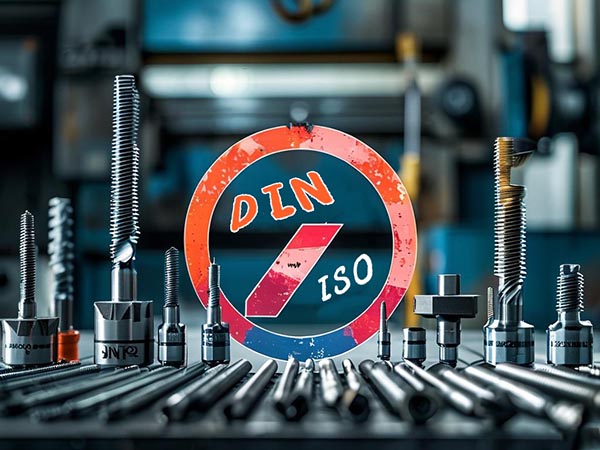
A Strategic Duel: DIN vs ISO Standards in the Cutting Tool Trade
In the arena of global precision tool manufacturing, DIN and ISO standards represent two fundamentally different "industrial languages" that influence every step from material selection to process design. Originating from Germany’s industrial revolution, the DIN system embodies military-grade precision. Meanwhile, the ISO system—born from the push for global standardization—reflects technical compromises reached through multinational negotiation. These divergences are more than just minute variations in thread angles; they reveal a deeper technological battle at the microstructure and heat treatment level. As Chinese toolmakers confront dual demands from Europe’s high-end market and Southeast Asia’s emerging economies, decoding the core distinctions between DIN and ISO standards becomes the key to breaking through technical trade barriers.
DIN (Deutsche Industrie Norm), established by the German Institute for Standardization (DIN e.V.), traces its origins to the late 19th-century industrial boom in Germany. It is characterized by an obsessive emphasis on engineering precision, particularly in sectors like cutting tools and mechanical components. For instance, DIN requires tap thread angle tolerances within ±0.5°, and its heat treatment protocols mandate logging micro-level parameters like furnace oxygen content—hallmarks of Germany's “technological absolutism.” Initially designed to serve domestic industries, DIN standards eventually became the benchmark in Europe’s high-end manufacturing markets due to their unmatched reliability.

ISO (International Organization for Standardization) is a global standardization body comprising 164 member nations. Its goal is to eliminate technical trade barriers. ISO parameters are often the “greatest common divisor” of global technical requirements. For example, ISO drill bit tolerance ranges are 30%–50% wider than DIN’s, to accommodate varying machine accuracies across countries. In the cutting tool sector, ISO emphasizes general applicability and cost-efficiency—such as allowing standard measuring instruments instead of high-precision devices. While this flexibility suits emerging markets, it sometimes raises concerns about a "quality baseline."

| Parameter | DIN 17350 Requirement | ISO 4957 Requirement | Impact on Tool Life |
|---|---|---|---|
| Vacuum Furnace O₂ Content | ≤0.0008% | ≤0.003% | 42% reduction in edge chipping |
| Tempering Temperature Fluctuation | ±3°C | ±5°C | 15 HRC difference in red hardness |
| Grain Size Inspection | 1000x SEM | 500x Optical | 2.7x difference in fatigue strength |
| Equipment Type | DIN Line Setup | ISO Line Setup | Cost Ratio |
|---|---|---|---|
| Grinding Machines | Walter Helitronic Power (5-axis) | Taiwan CNC (3-axis) | 8.7x |
| Measuring Devices | ZEISS O-INSPECT 322 | Domestic Projector | 15x |
| Environment Control | ±0.5°C Climate-Controlled Room | ±2°C Standard Workshop | +220% energy cost |
The fundamental divergence between DIN and ISO standards lies in their underlying philosophies of precision manufacturing. DIN embodies the German tradition of rigorous process control, while ISO emphasizes flexibility and global adaptability. From the military-grade 59.5° helix angle to the ±0.0005mm tolerance in coatings, each microscopic parameter reflects a delicate balance between quality assurance and market scalability. As innovations like laser cladding and quantum coatings push the boundaries of existing frameworks, we may soon witness a deep convergence of these standards. For international traders, understanding these differences is not just a technical upgrade—but a core strategic competency in meeting global market demands.

 We like to do design according to all the customers' requirements, or offer them our new designs. With strong OEM/ODM capabilities, we can fill your sourcing demands.
We like to do design according to all the customers' requirements, or offer them our new designs. With strong OEM/ODM capabilities, we can fill your sourcing demands.